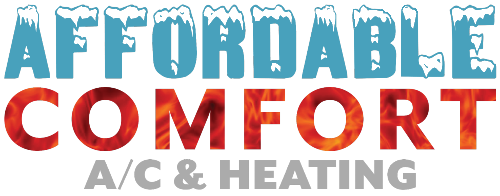Hot Spots in the Home
Dog sleeping on the a/c vent in front of a fan.
Summer temperatures are scorching, and the soaring heat makes it essential for air conditioners to work correctly. However, when a homeowner has hot spots, it means something isn’t up to standard.
Today we’re going to talk about hot spots in a home, the causes, and how to obtain relief from them. Believe it or not, rolling back the temperature for the whole house isn’t the solution!
HVAC IS SUBSTANDARD
If your condenser is damaged, you'll want to replace that.
If the HVAC is too small or too old, it won’t cool the home efficiently. If you’ve lived in the house for a long time, and notice that over the years, your HVAC has become less efficient in spite of regular service, it may be time to think about a replacement. But, if you move into a home and notice you see to have high electric bills, especially in summer, go out and take a moment to assess your HVAC condenser. It’s the big metal box outside your home with the fan in it.
Fans will help move warm air upwards, but don't solve the hot spot problem.
If weeds or foliage surround the condenser, those need to be cut back, because they could be interfering with its operation. If it’s making so much noise you can’t hear the sound of your voice; if it’s making unusual sounds or looks rusty or damaged, those are some signs it might be too old to function correctly. If you can find the metal plate with the manufacturing information on it, take a photo of it before you go back inside. Once you have that, you can use the make and model number to find the manufacturing date if it isn’t printed on the plate. If it’s written on the plate and it’s more than ten years old, that’s another alert.
If it’s newer than ten years old, it may just be too small for the amount of space which requires cooling.
BADLY INSULATED
If your home is poorly insulated, hot spots can be the result. Take a look at the insulation in your attic. If it’s less than 14 inches, patchy, or missing, you may have found the hot spot culprit. If the hot spots are apparently in line with windows, make sure to use insulating curtains, blinds or shutters.
LEAKS IN DUCTWORK
We have talked about ductwork in previous blogs. One thinks ductwork is stable and won’t move, but a lot happens in a typical airflow situation, whether it’s due to the force of the flow, something hitting the duct (like that box with your Christmas tree you store in the attic!) or even rodents.
Checking ductwork is easy when the fan is on. Follow the ductwork and check for any air blowing out of cracks, especially at corners and junctions. Use metal duct tape or duct mastic to repair it: do not use the duct tape you use when you tape up moving boxes!
If you have hot spots and aren’t able to run down and repair the culprit, give us a call and we'll come to your home and do some diagnostics.
Trust locally-owned and operated Affordable Comfort A/C and Heating for HVAC preventative maintenance and thermostat services. Call 602-574-1205 to schedule a consultation.



